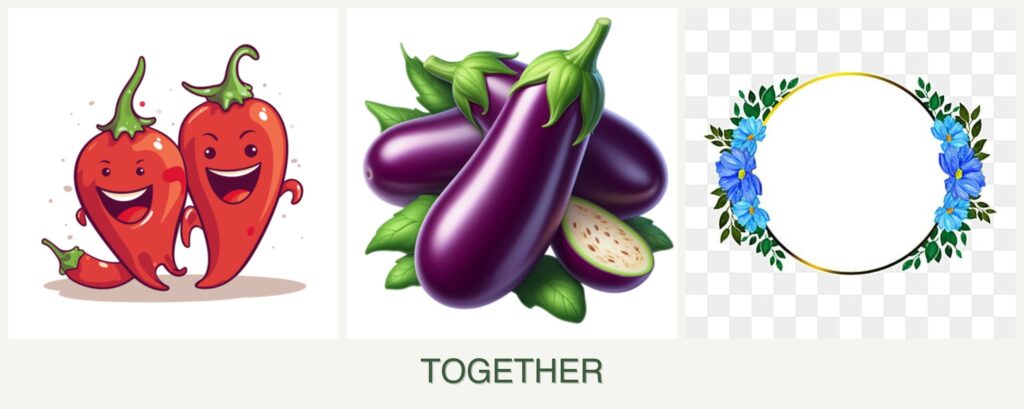
Can you plant peppers, eggplant and zinnias together?
Can You Plant Peppers, Eggplant, and Zinnias Together?
Companion planting is a popular technique among gardeners seeking to maximize their garden’s health and productivity. By strategically placing certain plants together, you can enhance growth, deter pests, and improve the overall garden ecosystem. In this article, you’ll discover whether peppers, eggplant, and zinnias can thrive when planted together and learn practical tips for successful companion planting.
Compatibility Analysis
Yes, you can plant peppers, eggplant, and zinnias together. These plants are compatible due to their similar growth requirements and the benefits they offer each other. Peppers and eggplants both belong to the Solanaceae family, sharing similar needs in terms of sunlight, water, and soil conditions. Zinnias, while not a vegetable, are excellent companions because they attract beneficial insects and pollinators that can help with pest control and improve pollination rates for your vegetables.
Key factors that make these plants compatible include their shared preference for full sun, moderate water needs, and well-draining soil. Additionally, zinnias can act as a natural pest deterrent, attracting predatory insects that keep harmful pests in check. Proper spacing is crucial to ensure each plant has enough room to grow without competing for resources.
Growing Requirements Comparison Table
| Plant | Sunlight Needs | Water Requirements | Soil pH and Type | Hardiness Zones | Spacing Requirements | Growth Habit |
|---|---|---|---|---|---|---|
| Peppers | Full sun | Moderate | 6.0-6.8, well-drained | 9-11 | 18-24 inches | Upright, bushy |
| Eggplant | Full sun | Moderate | 5.5-7.0, well-drained | 9-12 | 18-24 inches | Upright, bushy |
| Zinnias | Full sun | Moderate | 5.5-7.5, well-drained | 3-10 | 12-18 inches | Upright, varies by variety |
Benefits of Planting Together
Planting peppers, eggplant, and zinnias together offers several benefits:
- Pest Repellent Properties: Zinnias attract beneficial insects like ladybugs and parasitic wasps that prey on common garden pests, reducing the need for chemical pesticides.
- Improved Growth and Flavor: The proximity of these plants can enhance growth. Zinnias attract pollinators, which can lead to better fruit set in peppers and eggplants.
- Space Efficiency: These plants can be arranged to maximize space, with zinnias filling in gaps between larger vegetable plants.
- Soil Health Benefits: The diverse root systems of these plants can improve soil structure and nutrient availability.
- Pollinator Attraction: Zinnias are known for attracting bees, butterflies, and other pollinators, which are essential for the fruiting process of peppers and eggplants.
Potential Challenges
Despite their compatibility, there are potential challenges when planting these together:
- Competition for Resources: Ensure proper spacing to prevent overcrowding and competition for sunlight and nutrients.
- Different Watering/Feeding Needs: While their water needs are similar, monitor soil moisture levels to ensure all plants receive adequate hydration.
- Disease Susceptibility: Peppers and eggplants can be susceptible to similar diseases. Rotate crops annually to reduce disease buildup.
- Harvesting Considerations: Ensure that harvesting one plant does not disturb the others.
- Practical Solutions: Use mulch to retain soil moisture and suppress weeds, and consider staking taller plants to prevent shading.
Planting Tips & Best Practices
- Optimal Spacing: Maintain recommended spacing to ensure each plant has adequate room to grow.
- When to Plant: Begin planting after the last frost date when soil temperatures reach at least 60°F (15°C).
- Container vs. Garden Bed Considerations: All three plants can be grown in containers, but ensure containers are large enough to accommodate root growth.
- Soil Preparation Tips: Amend soil with compost to improve fertility and drainage.
- Companion Plants: Basil and marigolds are also excellent companions for peppers and eggplants, offering additional pest control and growth benefits.
FAQ Section
-
Can you plant peppers and eggplants in the same pot?
- Yes, but ensure the pot is large enough (at least 5 gallons) to accommodate both plants’ root systems.
-
How far apart should peppers and eggplants be planted?
- Space them 18-24 inches apart to allow for adequate air circulation and growth.
-
Do peppers and zinnias need the same amount of water?
- Yes, both prefer moderate watering, with the soil kept consistently moist but not waterlogged.
-
What should not be planted with peppers and eggplants?
- Avoid planting with other nightshades like tomatoes to reduce disease risk and nutrient competition.
-
Will planting zinnias affect the taste of peppers?
- No, zinnias do not affect the flavor of peppers but can enhance growth by attracting pollinators.
-
When is the best time to plant these together?
- Plant after the last frost in spring when temperatures are consistently warm.
By understanding the compatibility and benefits of planting peppers, eggplant, and zinnias together, you can create a thriving, productive garden that not only yields delicious vegetables but also supports a healthy ecosystem.



Leave a Reply